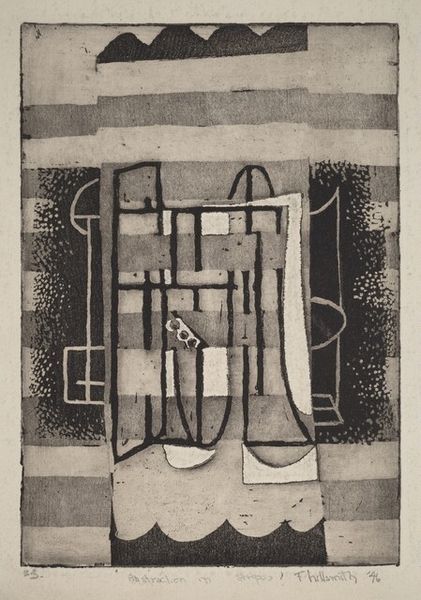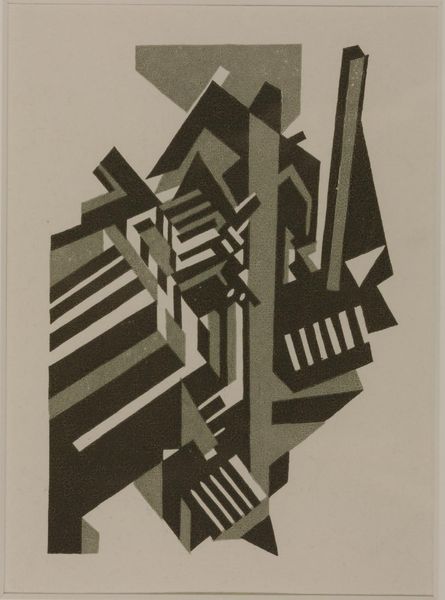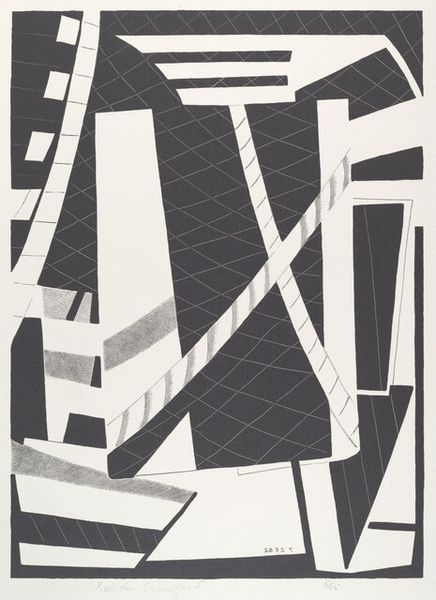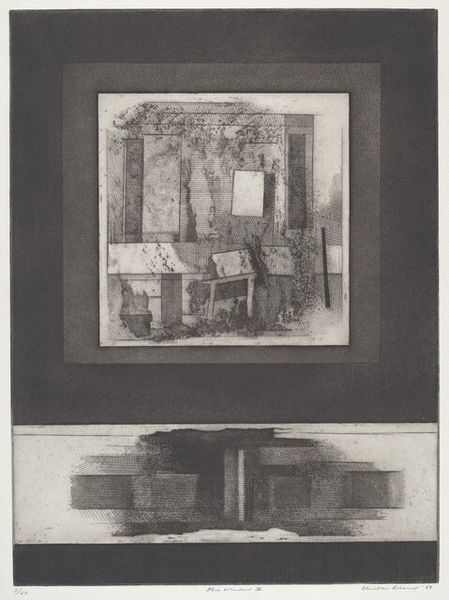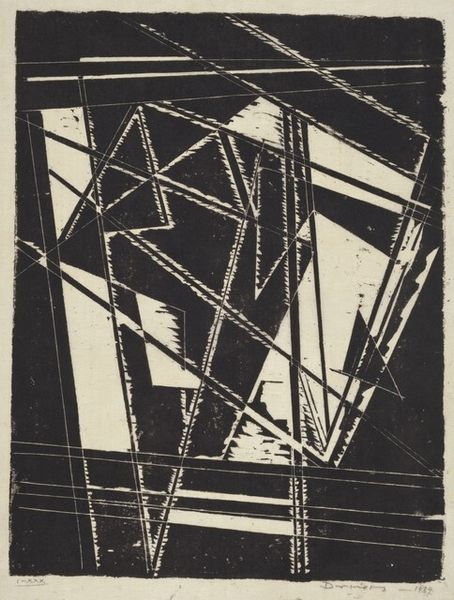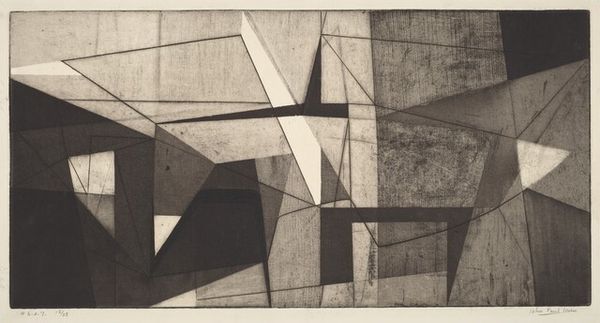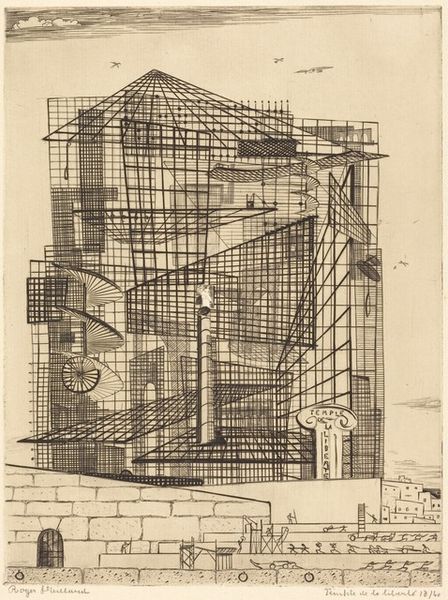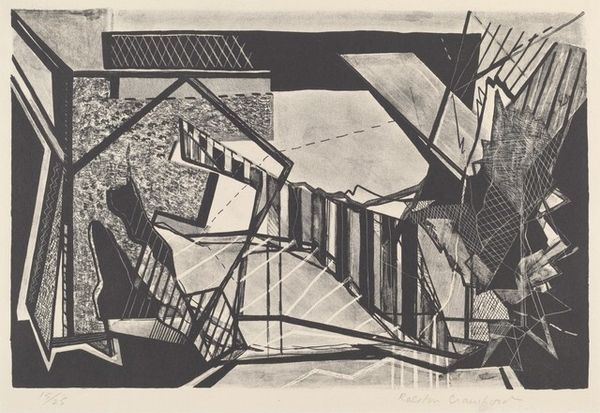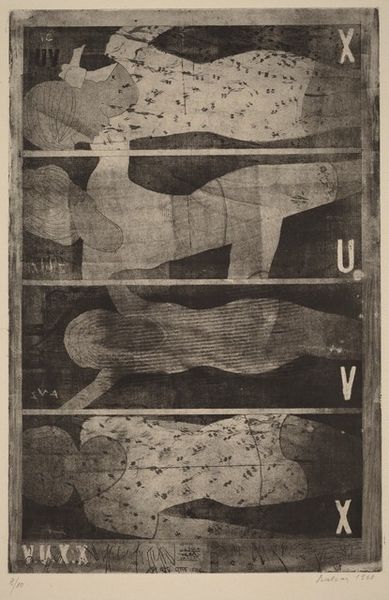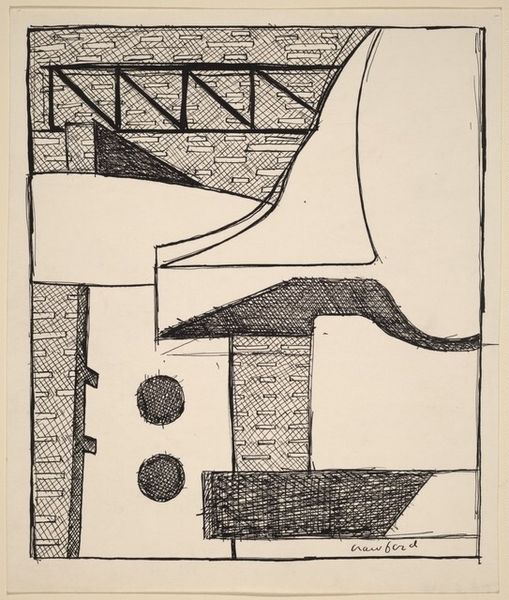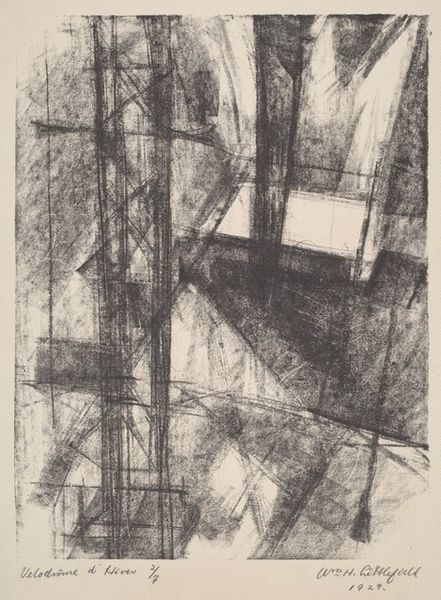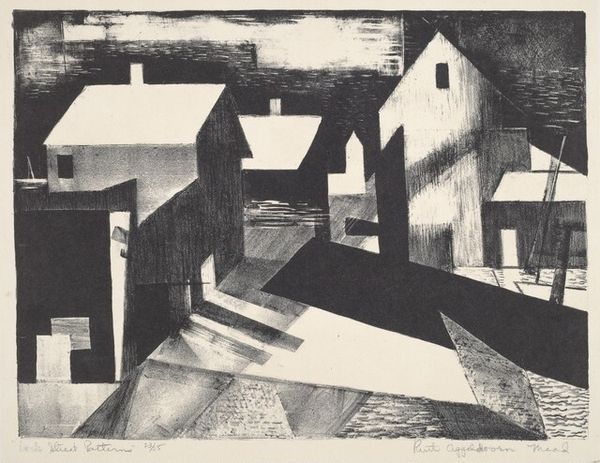
drawing, print, etching
#
drawing
#
cubism
# print
#
etching
#
form
#
geometric
#
abstraction
#
architectural drawing
#
line
#
modernism
Copyright: National Gallery of Art: CC0 1.0
Curator: Here we have Bernard Greenwald's etching from 1965, titled "Room". It's a fascinating example of the artist engaging with modernist abstraction through printmaking. Editor: It feels… unsettled. The geometry is present but chaotic; the varying tones created by the etching feel more anxious than organized. Curator: That tension might be intentional. Greenwald created this during a period of significant social upheaval. The work's cubist leanings allow for a fractured perspective, a reflection perhaps, of the fragmented sense of reality prevalent during the Cold War era. The room, normally a place of refuge, seems almost hostile. Editor: I agree. Looking at the composition, I see a fascinating interplay of positive and negative space. The heavy lines create strong geometric shapes, but the emptiness within these shapes is equally powerful. I'm particularly drawn to the circle near the top; it is the sole curved line in a network of rectilinear lines, a break in the established grid. Curator: And consider how the artist's choice of printmaking impacts the piece's reception. The inherent reproducibility of print allows the image to disseminate, becoming more accessible and embedding itself within the broader cultural landscape. Greenwald used etching, but why this medium and not lithography or screenprint? It adds layers of historical depth and symbolism. Editor: The use of etching gives this “Room” its distressed beauty. The textures created from the etching process give a hand-made effect, emphasizing that we are, in fact, observing an architectural abstraction, with linear perspectives flattened into planes. Note the visual weight that shifts across the surface due to tone differences; light struggles for purchase within the geometric network of dark line and shadowed shapes. Curator: Absolutely, and Greenwald’s focus on form—pure geometric form—isolates these architectural signifiers from function. Stripped of their intended purpose, what remains is the disquieting aura of a built environment divorced from human comfort or intent. It challenges the role of architecture as both physical shelter and ideological framework. Editor: It is an impressive print that makes one think, not only about geometry, but also about negative space and mark making; what constitutes a constructed reality? Curator: The artist made the room a vessel for ideas and questions, very telling. Editor: I appreciate you providing socio-cultural contexts, it gives greater depths to my formal assessment of lines and composition.
Comments
No comments
Be the first to comment and join the conversation on the ultimate creative platform.
